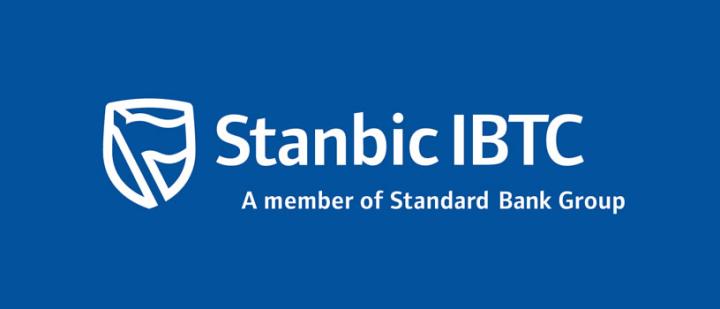Stanbic IBTC Holdings Plc has announced an impressive profit after tax of N173.4 billion for the first half of 2025, a performance that underscores the bank’s resilience in Nigeria’s evolving financial landscape. The results, filed with the Nigerian Exchange (NGX), highlighted the Group’s ability to leverage its diversified operations, even amid macroeconomic pressures.
The bank attributed this strong financial showing to a significant boost in interest income, which benefited from the Central Bank of Nigeria’s (CBN) tight monetary stance. With the policy rate remaining elevated, yields on loans and investment securities surged, creating opportunities for banks to earn more from lending and investment activities. For Stanbic IBTC, whose loan portfolio has been expanding steadily, this translated into stronger revenues that offset rising costs of doing business.

Gross earnings for the period grew considerably, supported not only by higher interest income but also by steady gains in non-interest income. Revenue streams from asset management, trading income, pension fund administration, and digital banking services all contributed positively to the bottom line. The Group’s asset management subsidiary, one of the largest in Nigeria, continued to attract inflows from both institutional and retail investors, a trend bolstered by growing awareness of long-term savings and investments among Nigerians.
The report also showed that customer deposits grew during the review period, reflecting strong confidence in the bank’s brand and stability. With rising concerns about inflation and exchange rate pressures, customers increasingly sought trusted financial institutions to safeguard their funds, a trend that worked in Stanbic IBTC’s favour. Its liquidity and capital adequacy ratios remained above regulatory benchmarks, providing reassurance to both regulators and investors.
Industry analysts have described Stanbic IBTC’s performance as a reflection of the strength of its diversified business model, which spans commercial banking, pensions, asset management, stockbroking, and insurance. This structure gives the Group a competitive edge, insulating it from risks that may affect single-line financial service providers. By diversifying earnings across multiple segments, Stanbic IBTC has maintained a steady growth trajectory, even in volatile economic conditions.
The performance also speaks to the broader banking sector dynamics in Nigeria, where high interest rates, while increasing borrowing costs for businesses and households, have widened net interest margins for lenders. Many Nigerian banks have benefited from this policy environment, but Stanbic IBTC’s ability to combine strong loan growth with non-interest income streams makes its case stand out.
Nonetheless, management acknowledged the persistent challenges in Nigeria’s economy, including inflationary pressures, foreign exchange volatility, and rising operational costs. These risks remain significant, particularly as businesses and households grapple with affordability constraints. The bank stressed its commitment to prudent risk management, noting that maintaining asset quality and managing non-performing loans will remain a priority in the second half of the year.
For shareholders, the results represent an encouraging outlook. Stanbic IBTC has a history of rewarding investors with dividends, and analysts predict that the board may consider an interim dividend payout given the strength of the half-year earnings. The bank’s share price on the Nigerian Exchange has already recorded gains in response to the results, signaling market confidence in its long-term growth prospects.
The bank’s Chief Executive, in a statement, emphasized that Stanbic IBTC will continue to invest in digital transformation to strengthen its customer base and improve service delivery. With fintech competition intensifying, Nigerian banks are increasingly turning to technology to drive efficiency and customer satisfaction. Stanbic IBTC’s early adoption of digital innovation has allowed it to retain relevance in an increasingly tech-driven market.
Observers also note that Stanbic IBTC’s performance could have wider implications for Nigeria’s financial sector. As the government and regulators work to stabilize the economy and attract foreign investment, the strong earnings of major financial institutions demonstrate resilience in the system. This stability is critical for rebuilding investor confidence, particularly as Nigeria seeks to boost capital inflows and deepen its financial markets.
In addition, the success of Stanbic IBTC’s pension and asset management arms reflects broader confidence in Nigeria’s retirement savings sector, which remains one of the fastest-growing in Africa. As more Nigerians join the contributory pension scheme, financial institutions with established pension fund administrators stand to benefit significantly. Stanbic IBTC’s position as one of the leading players ensures that it continues to capture a significant share of this growth.
Looking ahead, the second half of 2025 will test how well Nigerian banks can sustain their momentum, particularly if inflationary pressures ease and interest rates begin to moderate. For Stanbic IBTC, balancing loan growth with asset quality, managing costs, and expanding digital channels will be crucial to maintaining profitability.
Ultimately, Stanbic IBTC’s half-year results confirm its status as one of Nigeria’s most formidable financial institutions. Its ability to post N173.4 billion in profit despite economic headwinds speaks to strong corporate governance, a diversified revenue base, and a clear strategy for sustainable growth. As Nigeria’s economy navigates reforms and global uncertainties, banks like Stanbic IBTC will play a central role in stabilizing the financial system and driving economic recovery.
Support InfoStride News' Credible Journalism: Only credible journalism can guarantee a fair, accountable and transparent society, including democracy and government. It involves a lot of efforts and money. We need your support. Click here to Donate
